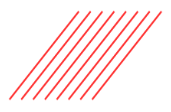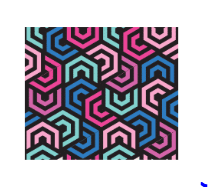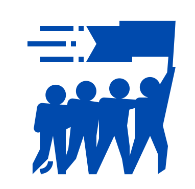What Is Graphic Design?
Edmonton IT Solution Graphic Designer career guide is intended to help you take the first steps toward a career in graphic design. Read on for an overview of graphic design, the types of graphic design, and the differences between graphic and UX design.
Graphic design is the craft of planning and creating visual content to communicate ideas and messages. Graphic design is everywhere you look in the digital age — from billboards to cereal boxes to mobile apps. Through incorporating different elements and principles, these designs can influence our perception and emotions.
Graphic design is also known as communication design, and Graphic Designers are essentially visual communicators. They bring visual concepts to life, most commonly through graphic design software, and inform or engage consumers through text, graphics and images.
Graphic design is one way that companies connect with consumers. Design can be used to promote and sell products, to convey a message, or to develop a brand identity. Though some graphic design has a commercial purpose, Graphic Designers combine art and business, so the creative process is informed in part by business goals.

What Are the Elements and Principles of Graphic Design?
The elements and principles of graphic design include line, color, shape, space, texture, typography, scale, dominance and emphasis, and balance. Together, they work to create visually appealing work that conveys a message.

LINE
Lines are present in nearly every design, whether they are straight, curved, thin, thick, dashed, long, or short. Lines connect any two points. They are useful for dividing space as well as directing the viewer’s attention in a specific direction

COLOUR
Color is perhaps the most important and obvious element of a design. It can create impact right away, and it is noticed by everyone, even those without a design background. Colors can be used in backgrounds or within other elements.

SHAPE
Shape, also known as form, is the combination of lines. Shapes can be circles, squares, rectangles, triangles, or other abstract forms. Most designs include at least one shape. Similar to color, shapes have different associations.

TEXTURE
Textures are becoming more commonly used, replacing single-color backgrounds. Textures can include paper, stone, concrete, brick, and fabric. They may be subtle or obvious and be used sparingly or liberally.

TYPOGRAPHY
When working with text, Graphic Designers need to consider the relationship between how text looks and what it says. Typography is the art of arranging text in legible and engaging ways. Different moods or emotions can be expressed through different type choices.

Dominance and emphasis
Dominance and emphasis create a focal point in a design. It helps with the design flow and can guide the viewer to other parts of the design.

Harmony
Harmony is one of the main goals of graphic design. In a good design, every element needs to work together and complement each other. However, if everything is the same, a design can become monotonous. Designs need to strike a fine balance between harmony and contrast.

Scale
The scale and size of objects, shapes, and other elements can make certain parts of a design more dynamic. Scale can be used to create a visual hierarchy. Using scale, Graphic Designers can create focal points and highlight important areas.
What Are the Different Types of Graphic Design?
Graphic design is all around us, which means there are a range of graphic and UX design areas and specializations. Each type of design requires specific graphic design skills and techniques.
Visual identity graphic design
Visual identity graphic design focuses on the visual elements of a brand. It aims to communicate a brand’s identity through images, shapes, and colors. Graphic Designers within this area create elements like logos, typography, color palettes, and image libraries that represent a brand. They also develop visual brand guidelines to ensure brand consistency across all uses.


Marketing and advertising graphic design
This type of design is used to sell products or services. This may involve print advertisements, such as posters, billboards, flyers, catalogs and packaging, or digital advertisements, such as television ads, video ads, or social media posts.
If Graphic Designers work in this area, they spend a lot of time creating assets for marketing strategies and campaigns. They develop ideas, research consumer habits, and create designs that speak to the target audience. This type of design involves a strong knowledge of how to sell a product and how to entice consumers.
Web design
Web design involves planning and building the appearance, layout, structure, and design of websites. It focuses on the front-facing aspects of a website, including the user experience. Although somewhat similar to a graphic design career, Web Designers combine a variety of visual elements, such as text, photos, graphics, and video, to create appealing and user-friendly sites and pages. Web design is also closely connected to UX and UI design.


Publication graphic design
This design focuses on creating layouts and selecting typography and artwork, including photography, graphics, and illustrations. Graphic Designers in this area work with books, newspapers, magazines, and catalogs. They need to understand color management, printing, and digital publishing.
Packaging graphic design
Packaging not only protects products, but it is also an important marketing tool. Graphic Designers in this area develop concepts, mockups, and print-ready files. Packaging graphic design requires an understanding of print processes, as well as industrial design and manufacturing. Packaging Graphic Designers need to track trends and competitors so they can create packaging that stands out to consumers.


Motion graphic design
Motion graphic design is a new speciality area in the graphic design industry, though it is quickly growing and demand is increasing for Motion Graphic Designers. At a basic level, this type of design involves any graphic in motion. This can include animations, banners, title sequences, trailers, or video games.
Environmental graphic design
Environmental graphic design is a multidisciplinary practice that combines graphic, architectural, interior, landscape, and industrial design. This type of design connects people to places. Typically, these Designers will have a background in graphic design and architecture. They should be familiar with industrial design concepts and architectural plans. They may work on projects such as public transportation navigation, retail store interiors, signage, and office branding.


Illustration for graphic design
Graphic Artists create original artwork through a combination of media and techniques. They often have a background in fine arts, animation, or architecture. Graphic Artists collaborate closely with writers, editors, marketers and art directors across all types of graphic design.
